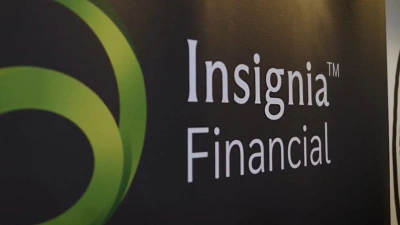Plantation projects meet growing demand for timber
Timber projects took the lion’s share of funds raised in the agribusiness sector in the last financial year. According to Australian Agribusiness Group, timber projects raised $506 million, which was up 105 per cent.
But is there market demand for the timber that will be grown?
Jaakko Pöyry Consulting (a forestry consulting firm) principal Rob de Fégely says Asian demand for paper and board products will increase by about 30 million tonnes in the next 10 years.
“There is significant growth in non-Japan Asia for paper and board products,” he says. “But despite Australia having a $13 billion forestry industry, we are small in global terms.”
The challenge facing Australia is in meeting the demand from a rapidly growing Asian market, de Fégely says.
Australian consumption of paper and board products is small, accounting for only 1.2 per cent of global demand. The major Asian users are China and Japan, with the entire region being a larger consumer of paper products than Western Europe.
It is estimated by 2010, the North American market will be seeking more than 100 million tonnes of paper and board products. Currently, the market is consuming about 60 million tonnes of product.
However, meeting the demand for paper products will not all come from export wood chips from Australia.
A considerable part of the growth of Asian demand is being met by recycled paper, which can be re-used up to five or six times. Asian countries are also producing paper from non-wood pulp such as straw.
In the sawn timber market, China, Japan and Korea will be the major drivers for product in the region, de Fégely says.
“The growth for sawn timber in the region will not be quite so strong as wood chip, but countries such as Japan still use timber frame houses,” he says.
“The Asian countries are also getting more efficient in the way they use timber, so that will flatten growth.”
The forecast is that Asia will use about 50 million square metres of sawn timber by 2010, which is only slightly up on current consumption.
The wooden panel market in Asia is still growing, de Fégely says, with China, Japan and Korea again the largest consumers.
According to Jaakko Pöyry, the consumption of wooden panels in Asia will be about 55 million square metres in 2005.
Australia is both an exporter and importer of wood chips and paper products, and sources its wood supplies from native forest, hardwood and softwood plantations.
Australia currently produces about 25 million square metres of timber from these sources and Jaakko Pöyry says this will stay about the same next year.
However, it is predicting a big jump in plantation timber supplies in 2010, with almost 40 million square metres of timber being produced.
The growth will come from the plantation timber as the logging of native forests declines.
“We are shifting from natural forests to plantations, but we are struggling with plantations as part of the social and economic diversity of rural and regional areas,” de Fégely says.
An area that has become home to many plantations is the region around Mt Gambier (in South Australia), Casterton and Portland (in Victoria), known as the ‘Green Triangle’.
There have been plantations in the area since 1874 and today there are about 300,000 hectares of pine and blue gum plantations, with the area attracting all the big timber producers such as Auspine, ITC, Timbercorp and Great Southern Plantations.
The latest to join the list of timber producers in the region is one of the oldest farming families in Mt Gambier.
The Collins family settled in the ‘Green Triangle’ region in 1867 as graziers.
In 1994, Peter Collins planted a crop of blue gums on a family property outside Mt Gambier.
The trees were planted under contract for Kimberly Clark for use in Australian paper products.
This first plantation is due for harvesting shortly and Collins says due to extensive work on weed control and fertiliser application in the early life of the plants, there have been very few trees lost.
“We planted about 1,200 trees per hectare, but this was thinned down to 880 trees per hectare for better growth rates,” he says.
Allowing for losses, Collins says they plant around 1,000 trees per hectare, with an average yield of 700 to 800 trees per hectare.
“If you have more trees per hectare it means the size of the tree is slightly poorer than a less dense planting,” Collins says.
A second plantation was established on the same farm in 1995, but he admits the site was subject to weed invasion, which reduced the effect of herbicide, and the following year the young trees suffered a severe insect attack.
This plantation will produce about 50 per cent less timber than the first, Collins says.
But the lessons learned from these early setbacks have been incorporated into the latest plantations that will form part of a new timber investment scheme to be launched in September.
The new investment will be developed through a pooled development fund (PDF), called Plantation TimberBank Australia.
The fund will develop four companies investing in the timber industry. The companies will cover plantations, fuel-wood processing and distribution, tree farm carbon credits, and tree harvesting and haulage.
Melbourne-based Intrinsic Investment Management will control the investment part of the PDF, while Collins’ company, Plantations Timber Group, will handle the forestry side of the fund.
Collins says the reason for launching the fund in the new financial year is to distance it from the tax-driven timber managed investment schemes that seek to raise funds before the end of June.
The PDF will be open to investment all year around with equal taxation treatment regardless of when the investor places monies.
Plantations Timber Group now has a number of plantations in various stages of growth. It already has contracts to supply wood chips to WA Plantation Group, which is owned by Marubeni Corporation and Nippon Paper Industries.
The timber from the company’s plantations will be chipped on site, although some timber will be sold as saw logs. This will be processed at local sawmills in the ‘Green Triangle’.
The wood chips will be trucked to the Victorian port of Portland where Plantations Timber has leased a grain storage building from Graincorp.
Usually wood chips are stored uncovered on the dockside before loading onto ships. If it rains, the wood chips get wet and the buyer will try to negotiate a lower price as the chips have a high water content.
By storing them dry, a higher export price can be achieved. The average dry tonne price of wood chips, based on a five-year average, is now $151.40 a tonne.
The storage shed at Portland will hold 50,000 tonnes of wood chips and the average ship will take between 38,000 and 40,000 tonnes.
Plantation TimberBank PDF will be an investor in all of these forestry activities centred around the ‘Green Triangle’, which is predicted to become a major supplier region of wood chip and sawn log in years to come.
John Wilkinson is Money Management’s Victorian correspondent. He was a guest of Plantations Timber Group on a visit to Mt Gambier.
Recommended for you
Net cash flow on AMP’s platforms saw a substantial jump in the last quarter to $740 million, while its new digital advice offering boosted flows to superannuation and investment.
Insignia Financial has provided an update on the status of its private equity bidders as an initial six-week due diligence period comes to an end.
A judge has detailed how individuals lent as much as $1.1 million each to former financial adviser Anthony Del Vecchio, only learning when they contacted his employer that nothing had ever been invested.
Having rejected the possibility of an IPO, Mason Stevens’ CEO details why the wealth platform went down the PE route and how it intends to accelerate its growth ambitions in financial advice.














